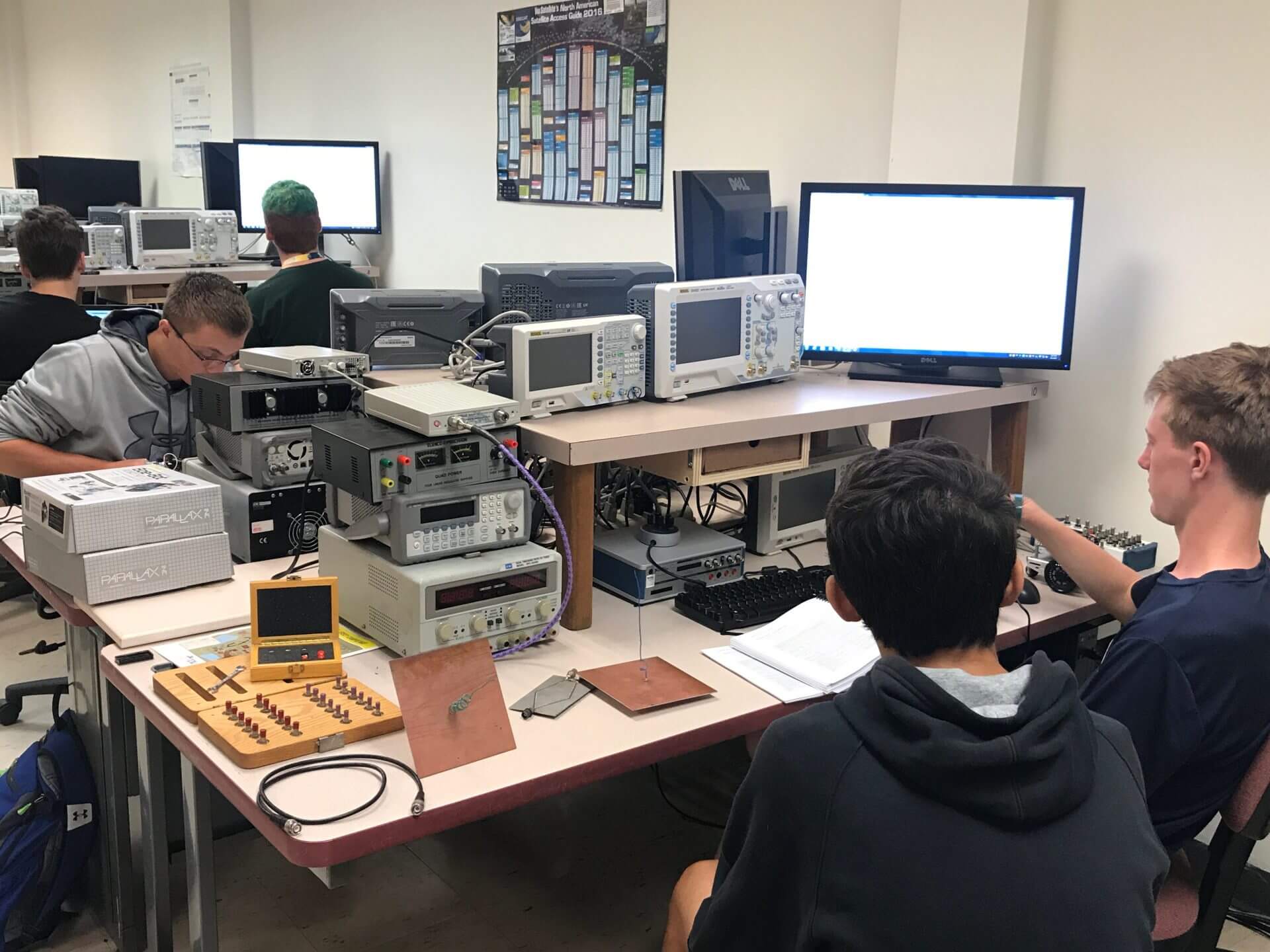
What Can Be Measured Using a Network Analyzer?
September 14, 2023What Can Be Measured Using a Vector Network Analyzer?
A Vector Network Analyzer (VNA) is a piece of test equipment that is capable of emitting signals over a broad frequency range. That signal is measured as it leaves the VNA port, and any returning reflection that re-enters the port is measured as well. The VNA can also measure a signal entering a separate port. If needing a simple start at understanding vector network analyzer basics, that is the starting point.
This is what differentiates a VNA from other test equipment; it can separate and measure signals traveling in both directions on a transmission line. Knowledge of how much signal passes through a Device Under Test (DUT) and how much is reflected back to the source allows a full characterization of the device. This information can help predict the performance of the DUT driven and loaded by any arbitrary complex impedance. Here, we cover some VNA measurement applications.
Amplifiers
VNAs are used extensively in design and production testing for a great number of electronic devices. RF amplifiers may be characterized for gain, input return loss, P1dB, output match, and stability. These characteristics are important to verify when designing an amplifier into a system.
Filters
Filters are an important part of most RF systems. A receiver designed to operate over a set bandwidth will invariably have a filter on the front end to limit the input to those frequencies. If the signal is mixed up or down to another frequency, a filter is required before the mixer to prevent ambiguous mixing at the image frequency.
A VNA can measure the passband insertion loss of a filter, S21 and the return loss at the input, S11. It can also measure the stopbands and VNAs from Copper Mountain Technologies have exceptional dynamic range which allows them to measure both passband and deep stopbands in one measurement.
Satellite and Space Systems
Satellite systems operate in high microwave to millimeter wave frequencies. Up and downconverters are commonly utilized to convert these high frequency signals down to a more manageable frequency for demodulation or for converting modulated lower frequency signals up to K or Ka band frequencies. A VNA can make “offset” frequency measurements. Sweeping the low frequency input of the upconverter and measuring the output at the higher frequency. Conversion loss or gain may be directly measured. Conversely the high frequency of a downconverter can be swept, and the low frequency output measured.
Gain flatness of the frequency converter is usually very important, so this measurement is quite useful. Offset measurement capability is a standard feature of all Copper Mountain Technologies VNAs, except for the economy-grade Compact Series M-model VNAs.
Cables and Waveguides
It is very common to use a VNA in the production of RF cables. Handheld portable 1-Port VNAs are conveniently used to verify proper cable performance while it is still on the production machine. Cable feedlines to antennas may be evaluated using the Time Domain mode to verify characteristic impedance over distance to check for damage or moisture ingress.
Waveguide transmission lines can be measured with a suitable coaxial to waveguide adapter. As an example, the long waveguide run from the radar to the transmitting antenna on a naval vessel may be evaluated using the Time Domain feature much like a cable feedline.
Antenna Measurement
An antenna should convert a signal on its feedline into radiated RF energy if the frequency is within the operating bandwidth. A reflection measurement is sufficient to evaluate the suitability and health of an antenna. If there is high reflection, then clearly there will be little energy radiated. Conversely, if the reflection is low, it can be assumed that energy is being radiated away. Return loss (S11) or VSWR are the usual measured parameters.
Material Measurement
Millimeter-wave VNAs may be used to perform material measurements. A sheet of a material to be measured is held in a frame between two antennas connected to a VNA. Two lenses focus the beam to transform the circular wavefronts into plane waves. The dielectric properties of a sheet material may be measured in this way. This might be important to evaluate a material used for a radome. The complex dielectric constant of the material can be calculated from these over-the-air S-parameter measurements.
Food and Beverage Industry
In the food industry, one might use a VNA to measure the dielectric properties of a liquid using a probe from SPEAG in Switzerland. The Time Domain function could be used to determine the liquid level in a sealed opaque container, and the latent moisture contained in bread, muffins, or cupcakes can be evaluated with a simple reflection measurement.
Agriculture
A VNA can be used to measure moisture in substances such as soil, grains, or wheat. Water has a very high dielectric constant –near 80– so its presence greatly increases the magnitude of RF reflections. A VNA could also be used to measure something like the ripeness of fruit or melons.
Medical
Microwave imaging is an exciting development in the medical imaging field. This method is much safer than using ionizing X-ray radiation. For example, a Copper Mountain Technologies VNA is embedded in the MammoWave breast-cancer imaging system from UBT.
These are just a few of the examples of what can be measured using a vector network analyzer. For more information, please visit our Technical Library or the Applications page to learn more about VNA testing in different industries.


